Comparison of flavor characteristics of Yunnan small-grain coffee with tin pickup or Katim coffee beans
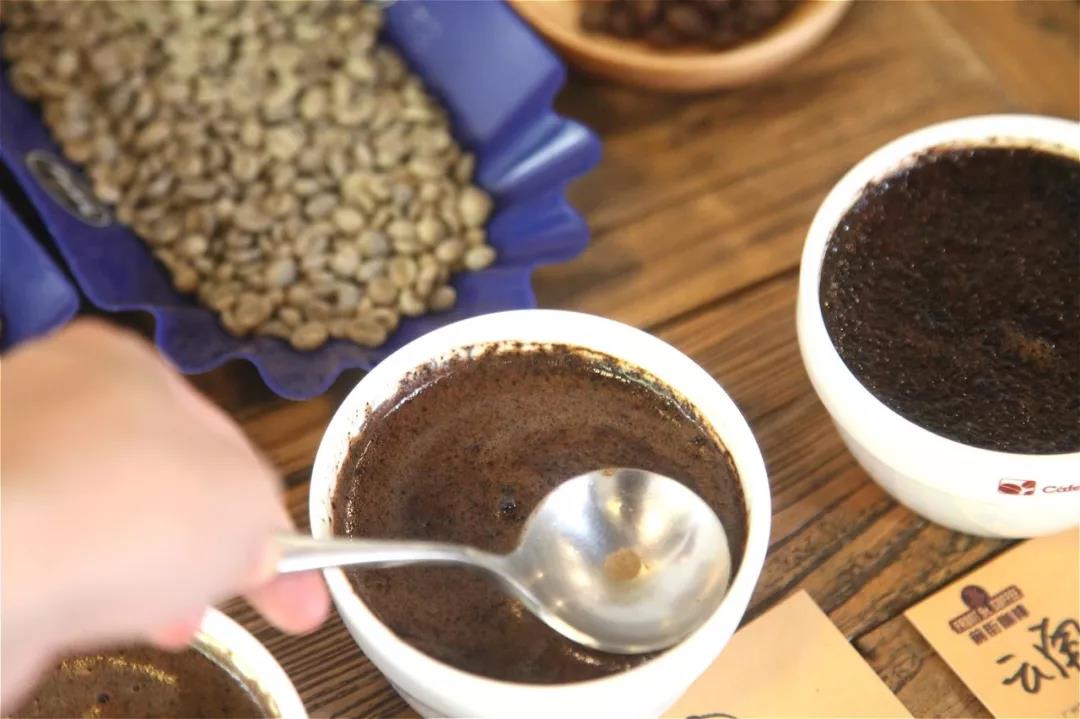
Professional coffee knowledge exchange more coffee bean information please follow the coffee workshop (Wechat official account cafe_style)
Is Yunnan Baoshan small grain Katim or tin pickup?
Small-grain coffee is suitable for growing in the mountain area of 800 meters above sea level. If the altitude is too high, it will taste sour, and if it is too low, it will taste bitter. Small grains of coffee are mostly planted in dry and hot valleys about 1100 meters above sea level, so they are moderately sour, rich and mellow. There is a unique environment suitable for the growth of small seed coffee in many areas of Yunnan, and the quality of small seed coffee is excellent.
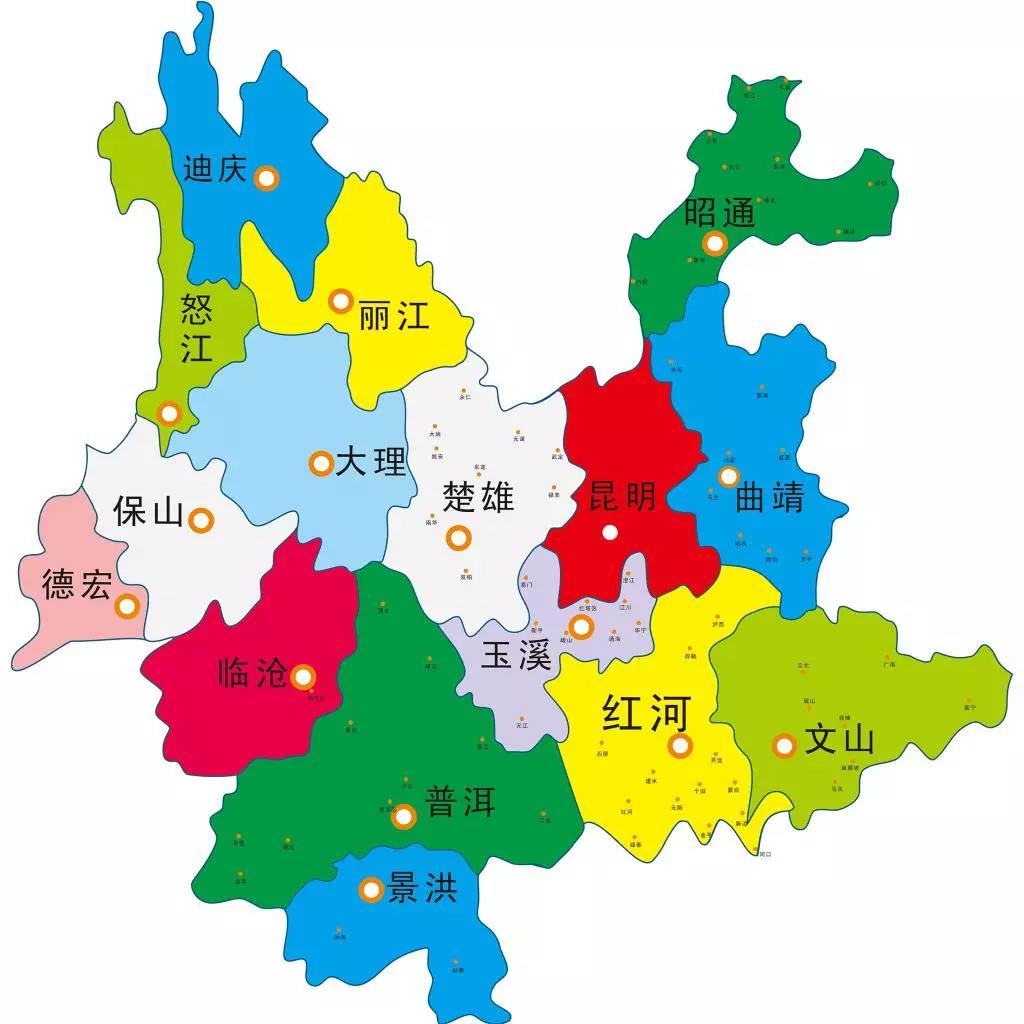
The planting areas are mainly distributed in Lincang, Baoshan, Simao, Xishuangbanna, Dehong and other states. The average temperature of Baoshan is 21.5℃, and the highest is 40.4℃, which is basically frost-free all the year round. It is recognized as the best producing area of small-grain coffee. The small-grain coffee cultivated here is famous at home and abroad for its strong but not bitter, fragrant but not strong, well-proportioned small noodles, mellow and fruity. International Coffee Organization tasting experts evaluate Yunnan coffee as the highest quality coffee in the world, such as Colombian wet-processed small-grain coffee.
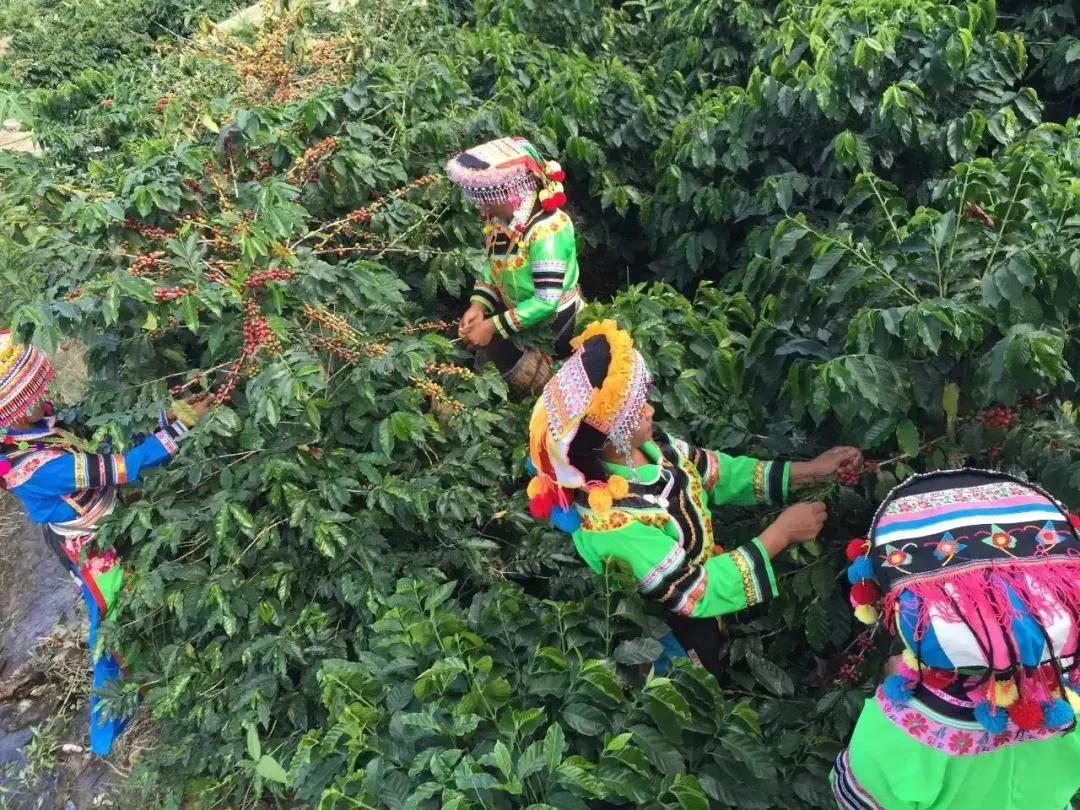
Small seed coffee plant name Arabica species, is a kind of coffee, a total of more than 100 varieties. Among them, tin pickup and bourbon are recognized as the best Arabica species in the world, and what the Baoshan people usually call "old varieties" are actually iron pickups and bourbon. There are more Yunnan beans on the market, and the variety is Katim. [Katim] is a Robusta gene with 1go 4, which produces more fruit and is easy to grow. The 18-year-old Katim AA tastes like mugi-cha, licorice, chocolate, caramel, low texture [coffee], which is different from our [Yunnan Huaguoshan iron pickup] variety, with caramel and brown sugar flavor, and floral aroma [coffee]. Only the coffee that suits you is the right choice.
[treatment washing]
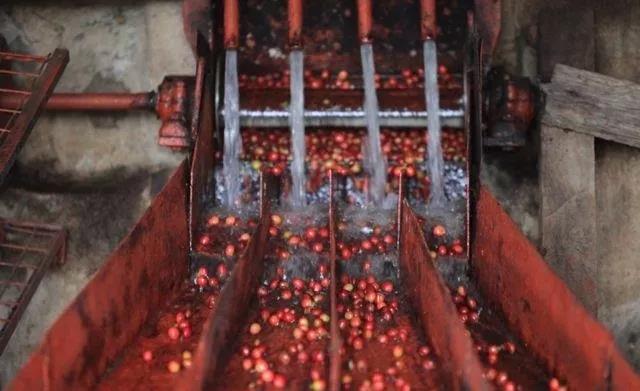
Use a peeling machine to separate most of the pulp from the coffee beans, then guide the shelled beans to a clean sink, soak them in water and ferment to completely remove the residual pulp layer. In the past (about five years ago), washing was often the first choice for good coffee bean treatment.
Through water treatment, unripe beans and defective beans are selected because of buoyancy, and the fermentation process is easier to control, so the flavor is not mixed like sun beans, but shows obvious acidity, complexity and cleaner (without any negative flavor, such as astringency or sharpness). But it is also because it is too "clean" and the richness of the flavor is a little weaker.
[variety comparison]
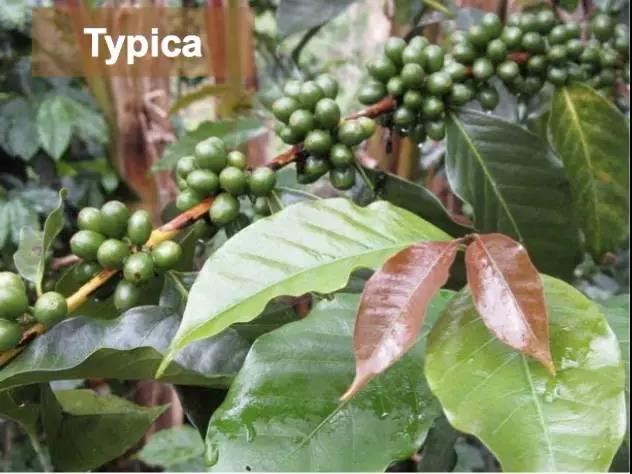
Iron pickup: the oldest native variety in Ethiopia and southeastern Sudan. All Arabica are derived from Tibika. The flavor is elegant, but the physique is weak, the disease resistance is poor, the fruit yield is less. The Ironpika bean is slender, the tree is tall, the fruit is oval, and the branches are slightly inclined. The four iron pickups are slender and unfolding. Excellent manor beans such as Jamaica Blue Mountains, Sumatra Mantenin and Hawaii Kona all belong to Tibica. Tiebika top leaf is red copper, called red top coffee, Tibika belongs to Arabica.
Coffee tree opposite leaves are long oval, smooth leaves, the end of the branch is very long, few branches, and the flowers are white, open at the base of the petiole connecting the branch. The ripe coffee berries look like cherries and are bright red with sweet flesh and contain a pair of seeds, namely coffee beans (Coffee Beans).
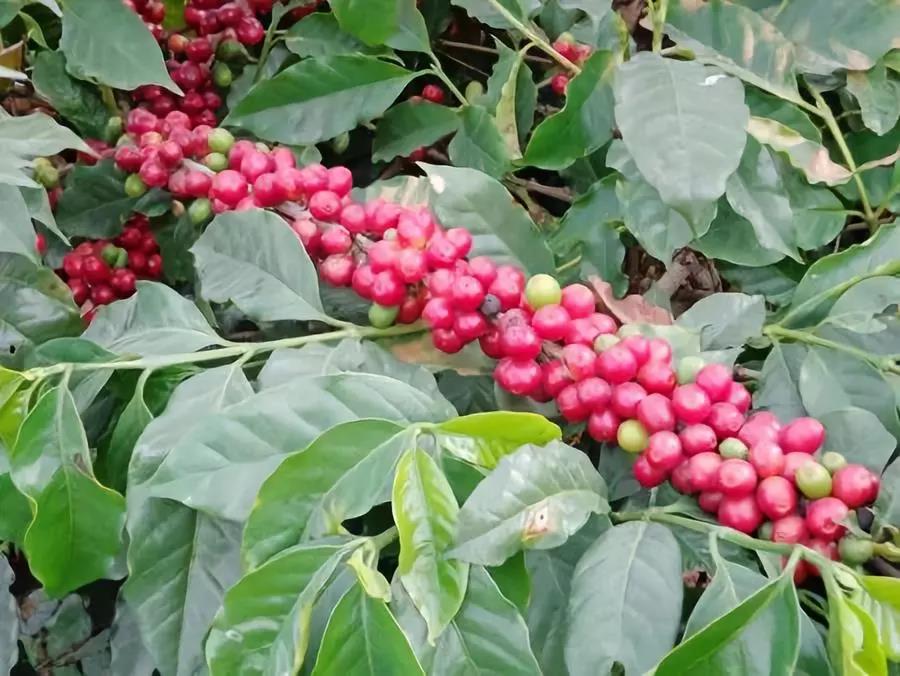
Katim: in 1959, the Portuguese mixed Brazilian Kaddura with Timo and bred the second generation of Cartimo, which has super disease resistance and yield capacity. But the flavor is also poor, and it is an important variety of commercial beans at present. In recent years, botanists from all over the world have turned to the interaction between Arabica and Katimodo in an attempt to reduce the pedigree of Luodou in order to improve the bad reviews of the Katimo Cup.
[washing treatment]
Unripe beans and defective beans are selected because of buoyancy, and the fermentation process is easier to control, so the flavor is not mixed like sun beans, but shows obvious acidity, complexity and cleaner (without any negative flavor, such as astringency or sharpness). But it is also because it is too "clean" and the richness of the flavor is a little weaker.
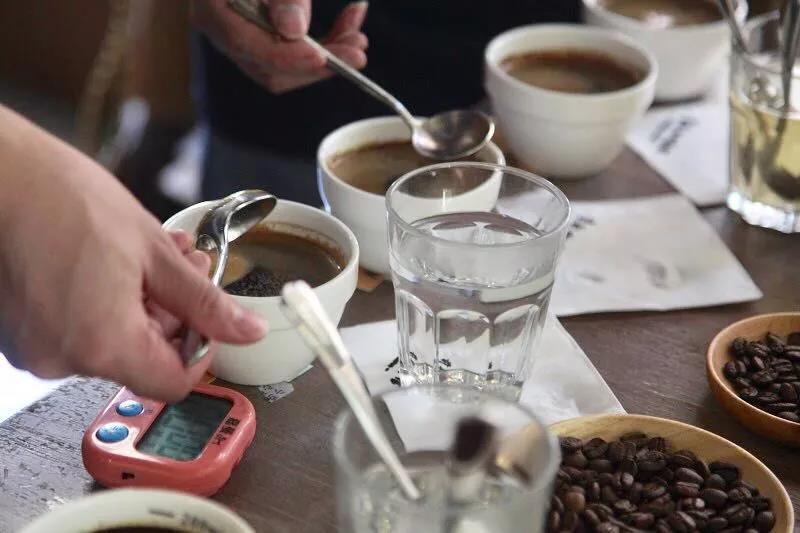
Huaguoshan Tieka Cup test flavor: the entrance is supple, Asian herbaceous aroma, acidity is lively and bright, cheeks are rich, acidity, mellow balance, rich layers, Yuyun dark chocolate, honey, sucrose taste obvious, after complete cooling, brown sugar flavor.
[sun treatment]
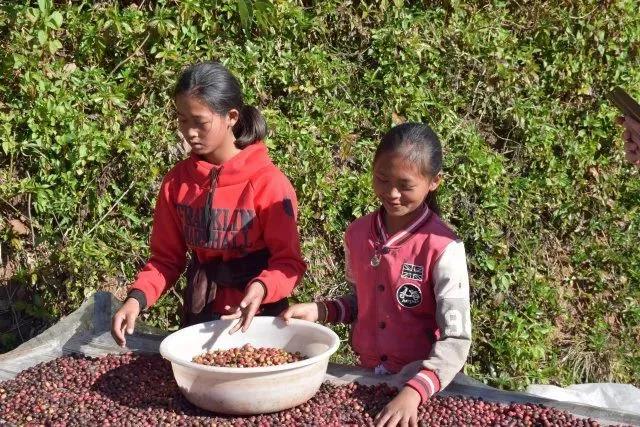
Use a peeling machine to separate most of the pulp from the coffee beans, then guide the shelled beans to a clean sink, soak them in water and ferment to completely remove the residual pulp layer. The fermentation process is also easier to control, so the flavor is not mixed like sun beans, but shows obvious sour, slightly more complex and cleaner cup characteristics. But it is also because it is too "clean" and the richness of flavor is slightly weak. after drying and exposure for about two to four weeks, the outer layer of coffee seeds has been dry and hard, and then use a sheller to remove the shell.
Katim cup test flavor: retain the flavor of caramel, dried fruit, cocoa, dark chocolate, herbs and wood
[cooking parameters]
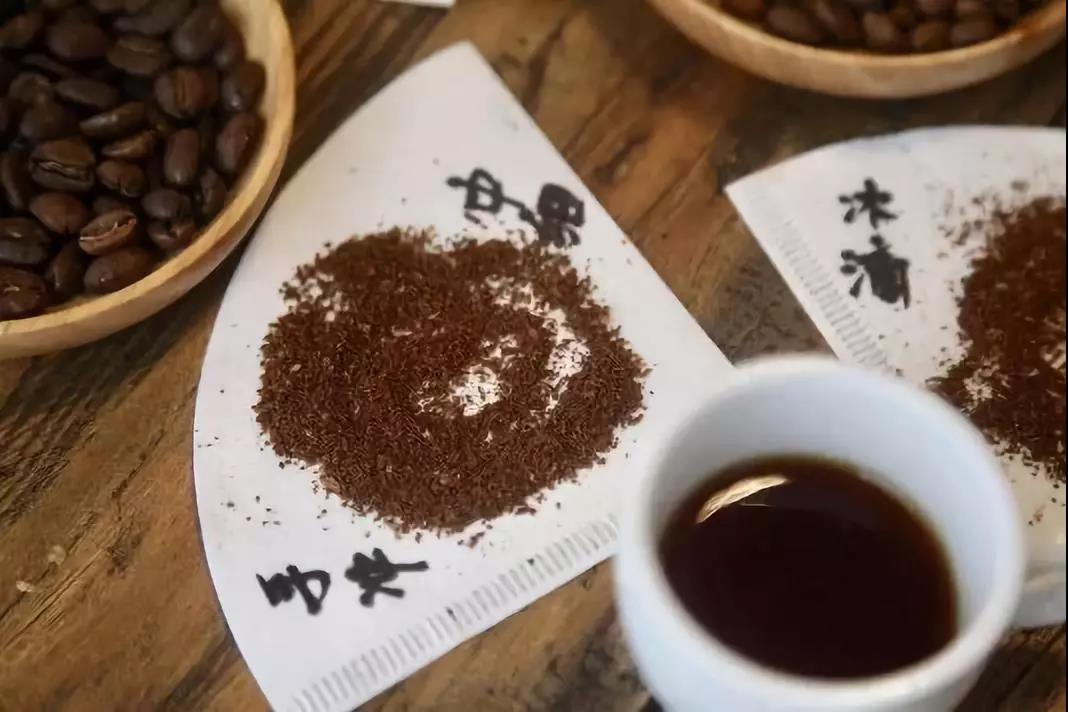
Iron pickup: V60 filter cup, 90 degrees, 15g powder, 1:15 powder ratio, grindability BG 5R (Chinese standard 20 sieve pass rate 64%), 25-125g-227g water 30 seconds steaming, the first small water injection to 125g, the second slightly larger water injection to 227g, time 2:03 seconds

Katim: V60 filter cup, water temperature 82-83 degrees, powder / water ratio 1:15, grindness BG 5R (64% pass rate of Chinese standard No. 20 sieve), same tax law, extraction time 1
Conclusion: because of the advantage of variety, Huaguoshan iron card is more acceptable, which is suitable for growing at high altitude, grows slowly, accumulates more nutrients, and is more complex in the sense of hierarchy. Katim has a pedigree of 1gamma 4 Luodou, which can be planted at low altitude, growing faster and combining less nutrients such as sugar, while Luodou's gene has a little bitterness. So the overall taste is not very outstanding.
Important Notice :
前街咖啡 FrontStreet Coffee has moved to new addredd:
FrontStreet Coffee Address: 315,Donghua East Road,GuangZhou
Tel:020 38364473
- Prev
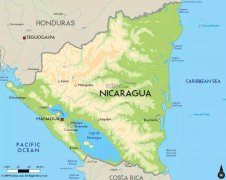
Filter cup| Cake cup, v60, kono filter cup, crystal cup to brew Nicaragua, taste what
Professional coffee knowledge exchange More coffee bean information Please pay attention to coffee workshop (Weixin Official Accounts cafe_style) filter cup| Cake cup, v60, kono filter cup, crystal cup brewing Nicaragua beauty, taste what difference? Each filter cup, due to the shape, filter hole and groove matching, will have a different impact on the taste of the extract, each filter cup has its own design advantages,
- Next
Is the 2018 Brazilian Coe tanning group champion-Andrade Bros Family Manor Coffee good?
Professional coffee knowledge exchange more coffee bean information please follow the coffee workshop (Wechat official account cafe_style) October 21st Brazil COE Excellence Cup final every October, is the time for Brazil to hold the COE competition, as raw bean porters on Brazilian estates, we have been closely monitoring the competition. This year, the final of the COE Excellence Cup in Brazil fell on October 21st.
Related
- Detailed explanation of Jadeite planting Land in Panamanian Jadeite Manor introduction to the grading system of Jadeite competitive bidding, Red bid, Green bid and Rose Summer
- Story of Coffee planting in Brenka region of Costa Rica Stonehenge Manor anaerobic heavy honey treatment of flavor mouth
- What's on the barrel of Blue Mountain Coffee beans?
- Can American coffee also pull flowers? How to use hot American style to pull out a good-looking pattern?
- Can you make a cold extract with coffee beans? What is the right proportion for cold-extracted coffee formula?
- Indonesian PWN Gold Mandrine Coffee Origin Features Flavor How to Chong? Mandolin coffee is American.
- A brief introduction to the flavor characteristics of Brazilian yellow bourbon coffee beans
- What is the effect of different water quality on the flavor of cold-extracted coffee? What kind of water is best for brewing coffee?
- Why do you think of Rose Summer whenever you mention Panamanian coffee?
- Introduction to the characteristics of authentic blue mountain coffee bean producing areas? What is the CIB Coffee Authority in Jamaica?

